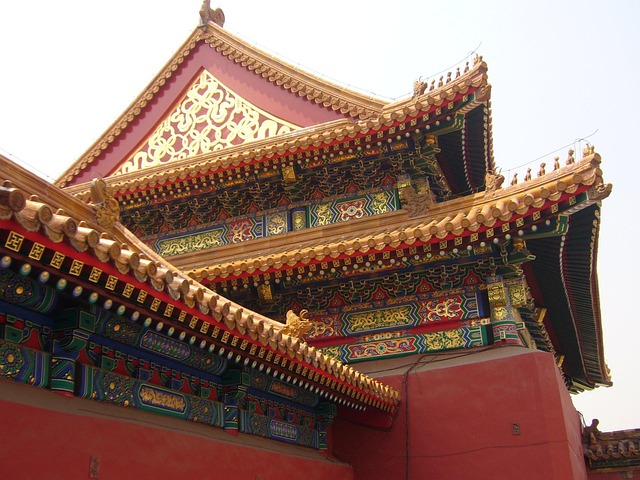Incorporating eco-friendly roof solutions like green roofs into architecture creates a powerful synergy where buildings become extensions of the landscape, offering both aesthetic and ecological benefits. These innovative designs enhance biodiversity, support local wildlife, provide insulation, and mitigate urban heat islands. By leveraging eco-friendly roof solutions, architects can design structures that harmonize with their environment, promoting well-being and sustainability for inhabitants and the planet, while transforming the built environment to coexist beautifully with nature.
In an era where sustainability is paramount, architects and designers are turning to nature for inspiration. Tailoring designs to blend seamlessly with natural surroundings and existing architecture creates a harmonious synergy. This article explores this innovative approach, delving into the understanding of architectural-natural interactions, the pivotal role of eco-friendly roof solutions, effective design strategies, and successful case studies. We also gaze into future trends, revealing how sustainable architecture and rooftop design are revolutionizing urban landscapes.
Understanding the Synergy Between Architecture and Nature
In the harmonious marriage between architecture and nature, the integration of eco-friendly design elements creates a powerful synergy. Buildings that embrace their natural setting become living extensions of the landscape, where man-made structures seamlessly blend with organic surroundings. This approach goes beyond aesthetics; it fosters a deeper connection between inhabitants and the environment, promoting well-being and sustainability.
Eco-friendly roof solutions, for instance, offer more than just aesthetic appeal. Green roofs or living roofs provide insulation, reduce urban heat islands, and create habitats for local wildlife. By understanding this synergy, architects can design buildings that respire with their environment, becoming active contributors to the overall health and balance of natural ecosystems in urban settings.
The Role of Eco-Friendly Roof Solutions in Harmonization
In the pursuit of seamless integration between man-made structures and nature, eco-friendly roof solutions play a pivotal role. These innovative designs go beyond mere aesthetics; they actively contribute to the overall harmony between architecture and its environment. By employing materials that are sustainable and biodegradable, such as vegetative roofs or green walls, buildings can effectively blend into their surroundings. This approach not only reduces the visual impact of structures but also provides numerous ecological benefits.
Eco-friendly roof solutions serve as a bridge between the built and natural landscapes. They help in mitigating urban heat islands by absorbing and releasing heat more efficiently than traditional roofing materials. Furthermore, these green roofs support biodiversity by creating habitats for local flora and fauna, fostering a balanced ecosystem within urban settings. Consequently, architects and designers are increasingly turning to eco-friendly roof solutions as a powerful tool to achieve seamless harmonization between architecture and natural surroundings.
Design Strategies for Seamless Integration with Surroundings
When integrating designs with natural surroundings and architecture, strategic considerations are key. One effective approach is to embrace eco-friendly roof solutions that mimic the landscape below. Green roofs or living roofs, for instance, incorporate vegetation, providing insulation while enhancing biodiversity. These organic elements blend seamlessly into the environment, creating a harmonious connection between buildings and nature.
Additionally, using locally sourced materials and natural colors can significantly contribute to a design’s integration. Local stones, woods, and plants not only reduce transportation emissions but also foster an immediate sense of place. Architects and designers can further blur the lines between structure and surroundings by adopting organic forms and fluid layouts that reflect the surrounding topography and existing ecosystems.
Case Studies: Successful Blending of Buildings and Landscape
In recent years, there has been a growing trend toward integrating architecture with its natural setting, resulting in breathtaking examples of harmonious design. One prominent approach is the implementation of eco-friendly roof solutions, which not only reduce environmental impact but also seamlessly blend into the surrounding landscape. Case studies from around the globe illustrate this point beautifully. For instance, the green roofs found in Chicago have transformed urban spaces by incorporating diverse plant life that mirrors the city’s natural parks and waterways. Similarly, in Copenhagen, Denmark, buildings feature living facades adorned with vegetation, mimicking the area’s lush greenery and becoming one with the city’s overall aesthetic. These projects demonstrate how architecture can respect and complement its environment, creating a harmonious coexistence that enriches both the built and natural worlds.
Future Trends in Sustainable Architecture and Rooftop Design
The future of sustainable architecture is focused on seamless integration with nature, and rooftop design plays a pivotal role in this vision. Eco-friendly roof solutions are gaining popularity as architects seek to minimize the environmental impact of buildings. Green roofs, for instance, offer an innovative approach by transforming flat rooftops into vibrant ecosystems that support local flora and fauna. This trend not only enhances biodiversity but also provides insulation, reduces urban heat islands, and absorbs rainwater, contributing to a building’s overall sustainability.
Rooftop design is evolving to include solar panels, integrated wind turbines, and other renewable energy systems, further blurring the line between structure and natural landscape. As cities strive to become more eco-conscious, these innovative roof solutions are set to define the architectural horizon, promoting a harmonious coexistence between man-made structures and their natural surroundings.
By understanding the symbiotic relationship between architecture and nature, designers can create structures that seamlessly blend with their surroundings. Eco-friendly roof solutions play a pivotal role in this harmony, offering both environmental benefits and aesthetic appeal. Through innovative design strategies, architects can achieve seamless integration, as evidenced by successful case studies. As we look to the future, sustainable architecture and rooftop design are poised to revolutionize the industry, further bridging the gap between man-made structures and natural landscapes.
